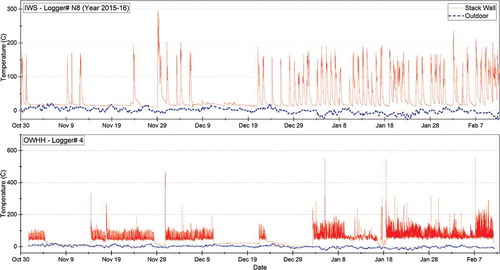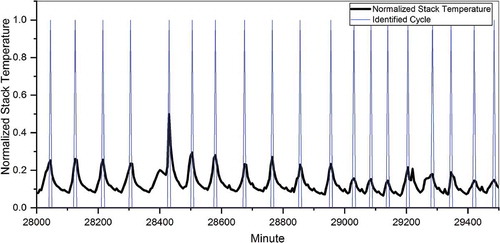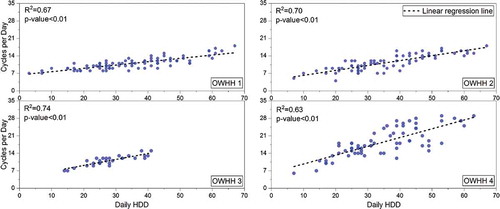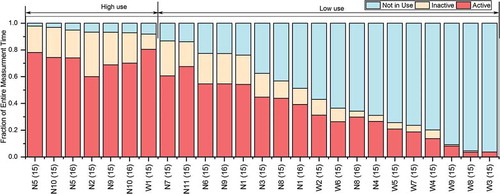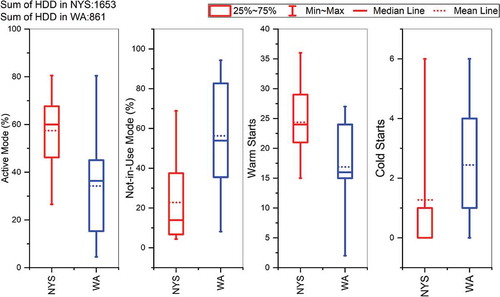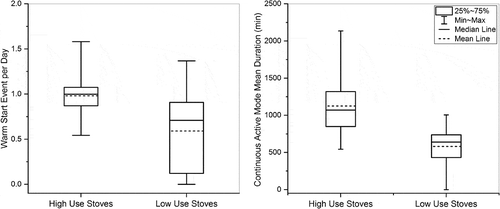Figures & data
Table 1. Descriptions of the outdoor wood boilers used in this study.
Table 2. Descriptions of the indoor wood stoves (IWSs) used in the study.
Table 3. Usage pattern of the studied OWHHs.
Figure 5. Correlations between weekly heating degree days and number of identified warm starts in OWHHs.
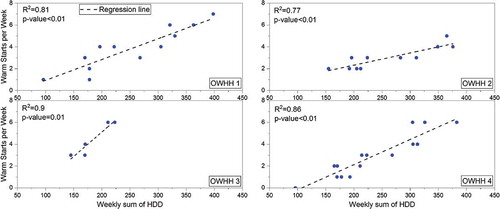
Figure 11. Relationship between the weekly sum of heating degree days and frequency of warm start events.
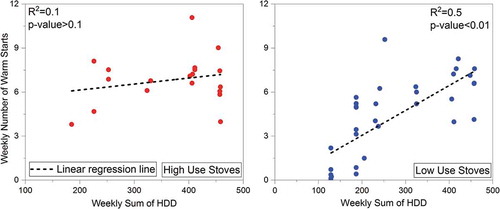
Figure 12. Correlation between the share of active mode and the mean duration of continuous active periods.
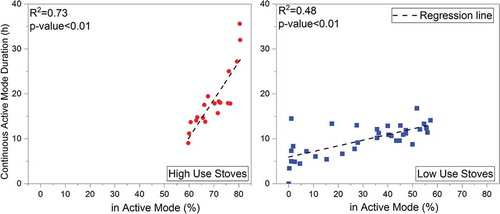
Table 4. Average usage patterns of the stoves in NYS with two years of measurement.
Table 5. Weekday/weekend analysis of IWS in-use modes.


